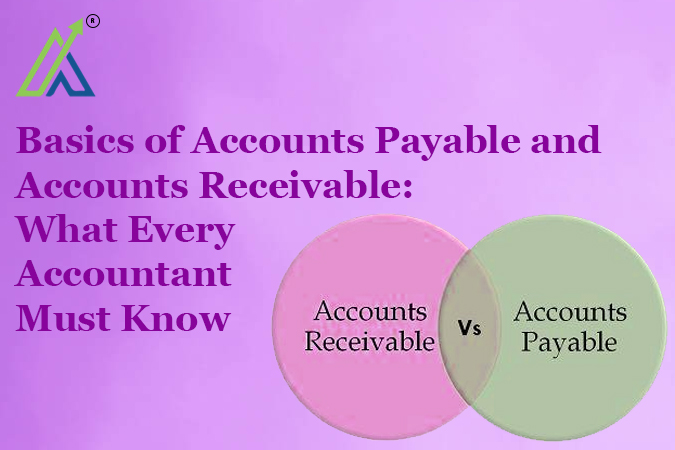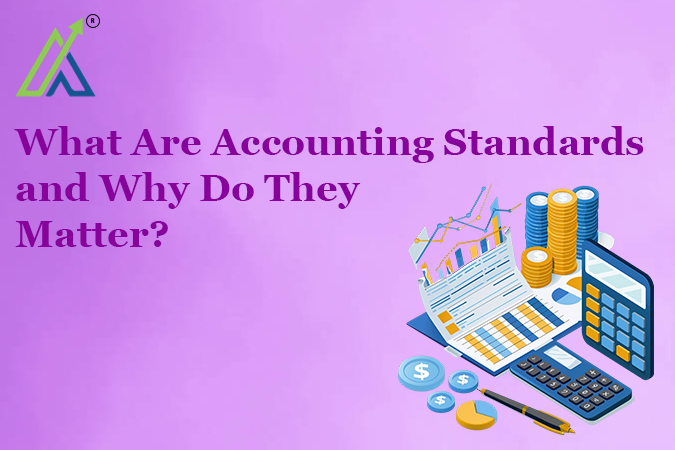Depreciation is not just an accounting term. It’s a reality every business faces. Machines wear out. Buildings age. Technology becomes obsolete. Depreciation captures this decline in value. It’s the systematic allocation of an asset’s cost over its useful life. Think of a delivery truck bought for ₹10 lakhs. It won’t last forever. Every year, part of its value is “used up.” Depreciation quantifies this wear and tear. But how? Why do methods vary? What happens when depreciation piles up? Let’s break it down.
What Is Depreciation?
Depreciation is the process of spreading an asset’s cost over the years it benefits the business. A laptop bought today for ₹50,000 won’t be worth ₹50,000 in five years. Its value drops due to usage, wear, or newer models. Depreciation isn’t about cash leaving the business. It’s an accounting adjustment. It matches the asset’s cost with the revenue it generates. No depreciation means profits look inflated. Expenses are understated. Tax liabilities rise. Financial statements lose accuracy.
Methods of Calculating Depreciation
Not all assets lose value the same way. A factory machine might degrade faster in early years. Office furniture might lose value steadily. Different methods exist to reflect these patterns.
Straight-Line Method
Simple. Predictable. The most common approach. Subtract the asset’s salvage value from its cost. Divide by its useful life.
Formula:
(Cost – Salvage Value) / Useful Life
Example: Machinery costing ₹5 lakhs, salvage value ₹50,000, life 10 years.
Annual depreciation = (₹5,00,000 – ₹50,000) / 10 = ₹45,000.
Same amount every year. Easy to track. Favored for assets with steady utility.
Written Down Value (WDV) Method
Accelerated depreciation. Higher charges in early years. Common in tax calculations. Increases the asset’s remaining book value by a certain percentage.
Formula:
Book Value × Depreciation Rate
Example: Asset cost ₹2 lakhs, depreciation rate 30%.
Year 1: ₹2,00,000 × 30% = ₹60,000.
Year 2: (₹2,00,000 – ₹60,000) × 30% = ₹42,000.
Value drops faster initially. Matches assets that lose value quickly, like vehicles.
Annuity Method
Factors in the time value of money. Treats depreciation as an annuity. Calculates equal annual charges that include interest. Rarely used but relevant for long-term leases or infrastructure projects. Complex. Requires present value calculations.
Double Declining Method
A faster version of WDV. Doubles the straight-line rate. Charges more upfront.
Formula:
2 × (Straight-Line Depreciation Rate) × Book Value
Example: Asset cost ₹10 lakhs, life 5 years. Straight-line rate = 20%. Double rate = 40%.
Year 1: ₹10,00,000 × 40% = ₹4,00,000.
Year 2: (₹10,00,000 – ₹4,00,000) × 40% = ₹2,40,000.
Aggressive. Used for tech gadgets or machinery with rapid obsolescence.
Depletion Method
For natural resources. Mines, quarries, oil wells. Depreciation tied to resource extraction.
Formula:
(Cost – Salvage Value) / Estimated Total Units × Units Extracted
Example: A coal mine costing ₹50 lakhs, estimated 1 lakh tons. Year 1 extraction: 10,000 tons.
Depletion = (₹50,00,000 / 1,00,000) × 10,000 = ₹5,00,000.
Diminishing Balance Method
Similar to WDV. Fixed percentage applied yearly. Differs in rate calculation. Often conflated with WDV but varies by jurisdiction.
Sinking Fund Method
Sets aside funds to replace the asset. Depreciation expense is invested. Earns interest over time. The total accumulated replaces the asset. Theoretical. Rarely used in practice.
Production Unit Method
Links depreciation to usage. Machines, vehicles.
Formula:
(Cost – Salvage Value) / Total Estimated Units × Units Produced
Example: A printer costing ₹1 lakh, salvage ₹10,000, expected to print 1,00,000 pages. Year 1 usage: 20,000 pages.
Depreciation = (₹1,00,000 – ₹10,000) / 1,00,000 × 20,000 = ₹18,000.
Fair for assets where wear depends on output.
Accumulated Depreciation: The Running Total
Accumulated depreciation is the sum of all depreciation charged on an asset since its purchase. It’s a contra-asset account. Lowers the book value of an asset shown on a balance sheet. A ₹10 lakh machine with ₹4 lakh accumulated depreciation shows a net book value of ₹6 lakh. It’s not cash reserved. It’s a record of value erosion.
Depreciation Schedule: The Roadmap
A depreciation schedule is a table. Lists assets, their costs, methods, rates, and annual depreciation. It’s a blueprint for tracking. For businesses with hundreds of assets, it’s indispensable. Ensures consistency. Simplifies audits. Helps forecast future expenses.
Depreciation’s Impact on Financial Statements
Depreciation doesn’t just sit in ledgers. It ripples through financial reports.
- Balance Sheet:
- Reduces asset value (via accumulated depreciation).
- Indirectly affects equity. Lower net assets mean lower equity if profits dip.
- Profit & Loss Statement:
- Depreciation is an expense. Lowers taxable income.
- A ₹50,000 depreciation charge reduces profit by ₹50,000. Saves taxes.
- Cash Flow Statement:
- Added back in cash flow from operations. Non-cash expense.
- No actual cash outflow, but impacts net profit.
- Tax Liabilities:
- Higher depreciation lowers taxable income. Delays tax payments.
- Methods like WDV (allowed under Income Tax Act) accelerate tax benefits.
- Investor Perception:
- Rising accumulated depreciation signals aging assets. May hint at future capital expenditures.
- Companies with low depreciation might overstate profits.
Why Methods Matter
Choosing a method isn’t arbitrary. It shapes financial health. Straight-line evens out expenses. WDV front-loads tax savings. A manufacturing firm might prefer WDV for machinery. A real estate company uses straight-line for buildings. Tax laws influence choices too. Companies Act 2013 prescribes useful lives for assets. Deviations require justification.
Mismatched methods distort comparisons. Two identical firms using different methods report different profits. Analysts adjust for this. Consistency is key. Changing methods mid-stream needs disclosure.
Questions to understand your ability
Q1.) Which depreciation method hits harder in the first few years?
a) Straight-Line Method
b) Written Down Value (WDV) Method
c) Double Declining Method
d) Production Unit Method
Q2.) What’s the deal with the Straight-Line Method?
a) Depreciation kicks off high and drops down
b) Depreciation is split evenly every year
c) Depreciation is based on a fixed percentage
d) Perfect for assets that get worn out fast
Q3.) How does depreciation screw with your Profit & Loss Statement?
a) Boosts taxable income
b) Doesn’t touch the P&L at all
c) Drops taxable income and becomes an expense
d) It’s counted as real cash going out
Q4.) Which depreciation method is best for stuff like machinery that takes a beating early on?
a) Straight-Line Method
b) Double Declining Method
c) Annuity Method
d) Sinking Fund Method
Q5.) Why do you even need a depreciation schedule?
a) Just to show the tax guys
b) To track asset costs, depreciation methods, and the rest of it
c) To make a profit prediction
d) To calculate how much depreciation has piled up in a week
Conclusion
Depreciation isn’t just about compliance. It’s strategic. A tool for tax planning. A signal of asset health. A component of pricing. Ignore it, and profits become illusions. Overstate it, and businesses look weaker than they are. For students, grasp this early. For professionals, master its nuances. From ledger entries to boardroom decisions, depreciation’s shadow looms large.
Assets come and go. Depreciation ensures their stories are told accurately. Every rupee lost to time finds its place in the books. Whether you’re tallying a petty cash register or auditing a conglomerate, depreciation stays central. Understand it. Use it. Let it guide smarter financial choices.
FAQ's
The method a company distributes the cost of an item over its useful life is depreciation. It’s an accounting technique meant to match the cost of the item with the income it provides, not a cash outlay.
Depreciation can be calculated using different methods like Straight-Line, WDV, and Double Declining, depending on how the asset’s value decreases over time.
In this method, depreciation is calculated by subtracting the salvage value from the asset’s cost and dividing it by its useful life. It’s a fixed amount every year.
Early on, this approach charges greater depreciation. It applies a fixed percentage to the asset’s book value, which decreases each year.
An accelerated version of WDV, this method doubles the straight-line depreciation rate to charge higher depreciation early on, ideal for assets that lose value quickly, like tech equipment.
This method links depreciation to the usage of an asset. It’s ideal for assets like machines, where depreciation depends on how much the asset is used, not just time.
Accumulated depreciation is the total depreciation charged on an asset over time. It’s recorded as a contra-asset and reduces the asset’s book value on the balance sheet.
Depreciation reduces the asset value on the balance sheet, lowers taxable income on the profit and loss statement, and adjusts the cash flow statement, though it doesn’t involve real cash outflow.




